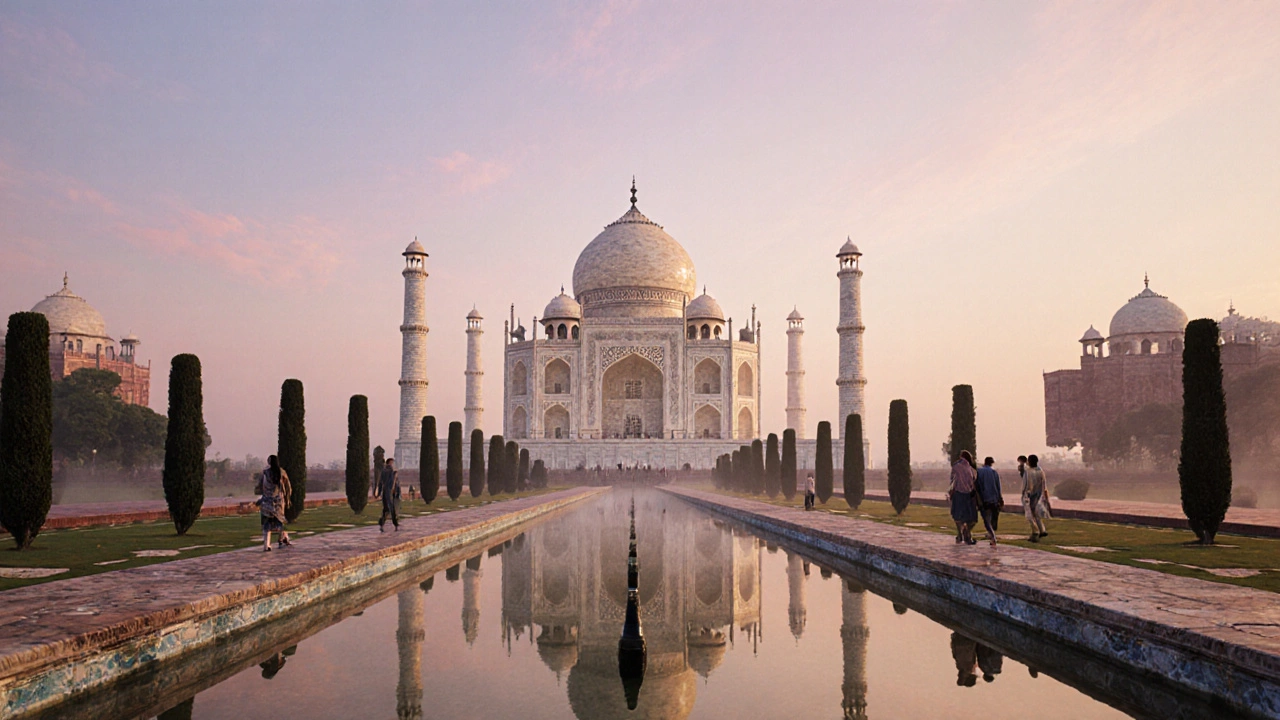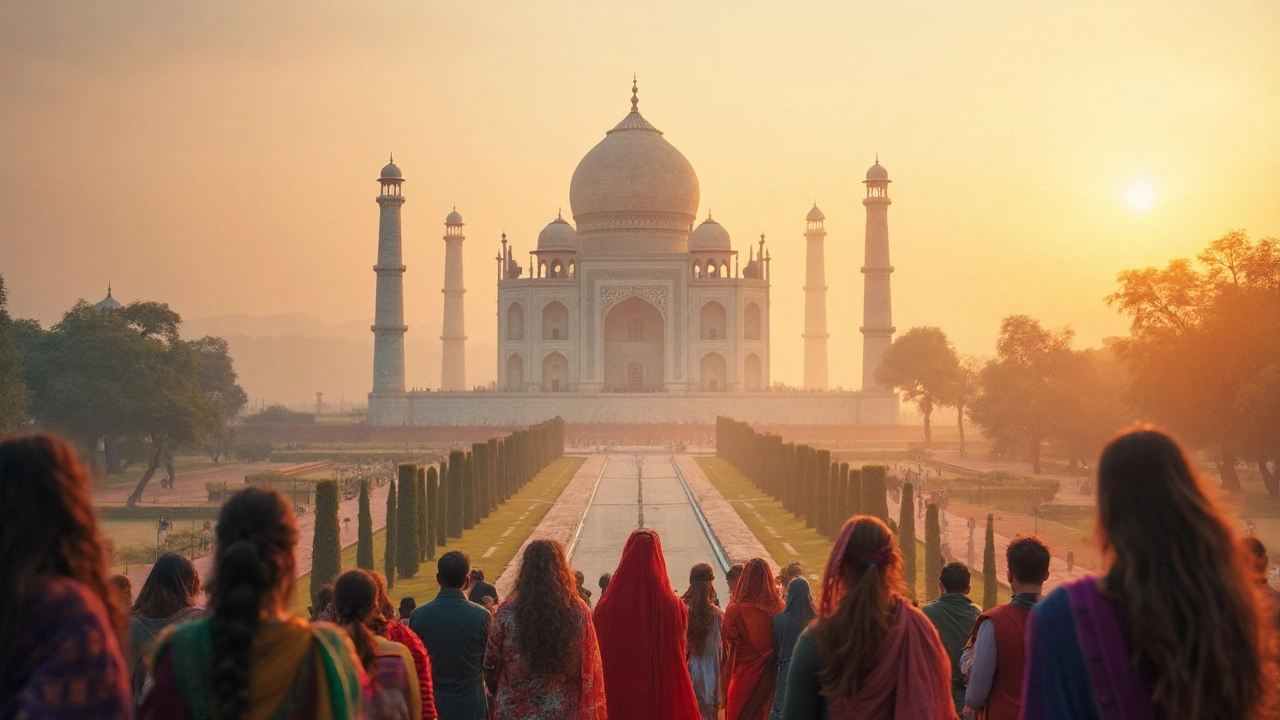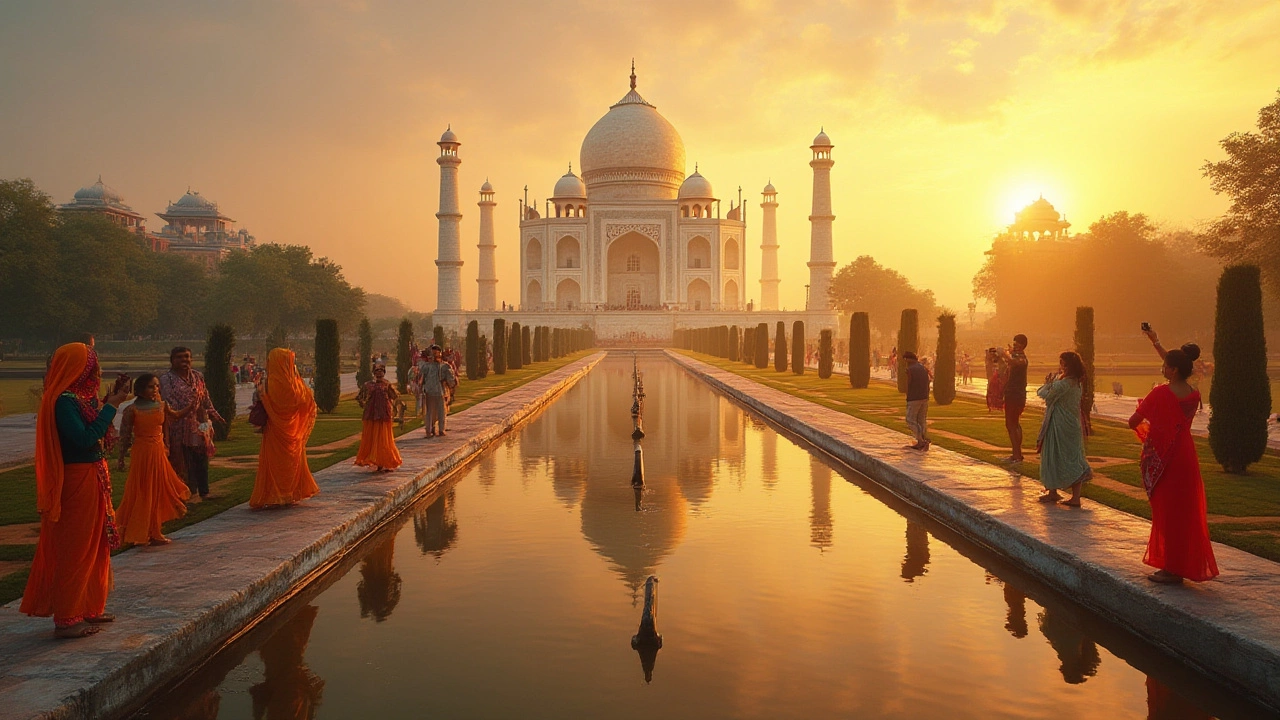Taj Mahal: India's Iconic Heritage Site and What You Need to Know
When you think of India’s most famous landmark, chances are you picture the Taj Mahal, a white marble mausoleum built in the 17th century by Emperor Shah Jahan in memory of his wife Mumtaz Mahal. Also known as the Monument of Love, it’s not just a tourist spot—it’s a UNESCO World Heritage Site and one of the New Seven Wonders of the World. This isn’t just architecture. It’s history carved in stone, engineering that defied its time, and a story that still pulls millions to Agra every year.
The Taj Mahal, a masterpiece of Mughal architecture blends Persian, Islamic, and Indian design. Its symmetry, the changing colors at sunrise and sunset, the intricate inlay work with semi-precious stones—these aren’t just pretty details. They reflect a level of craftsmanship rarely seen today. And it’s not alone. The UNESCO World Heritage Sites India, a list of 43 culturally and naturally significant places recognized by UNESCO, includes the Taj Mahal alongside ancient stepwells, forest temples, and colonial buildings. But few draw the same crowd, the same awe, or the same quiet reverence.
Visiting the Taj Mahal means more than snapping a photo. It means understanding why it’s protected, why locals treat it with reverence, and how it fits into the larger story of India’s heritage. Nearby, you’ll find the Agra Fort, another UNESCO site, where emperors lived and ruled. The city itself is a gateway to North India’s rich past. If you’re planning a trip, you’ll want to know the best times to go, how to avoid the crowds, and what else to see in the region. That’s why our collection includes guides on India’s top heritage sites, how to visit temples respectfully, and what makes certain places stand out in a country full of history.
Some people come for the romance. Others come for the photography. But everyone leaves with a deeper sense of why this place matters—not just to India, but to the world. Below, you’ll find real travel insights: how to plan your visit, what to expect, and how to connect the Taj Mahal to other unforgettable experiences across India.


